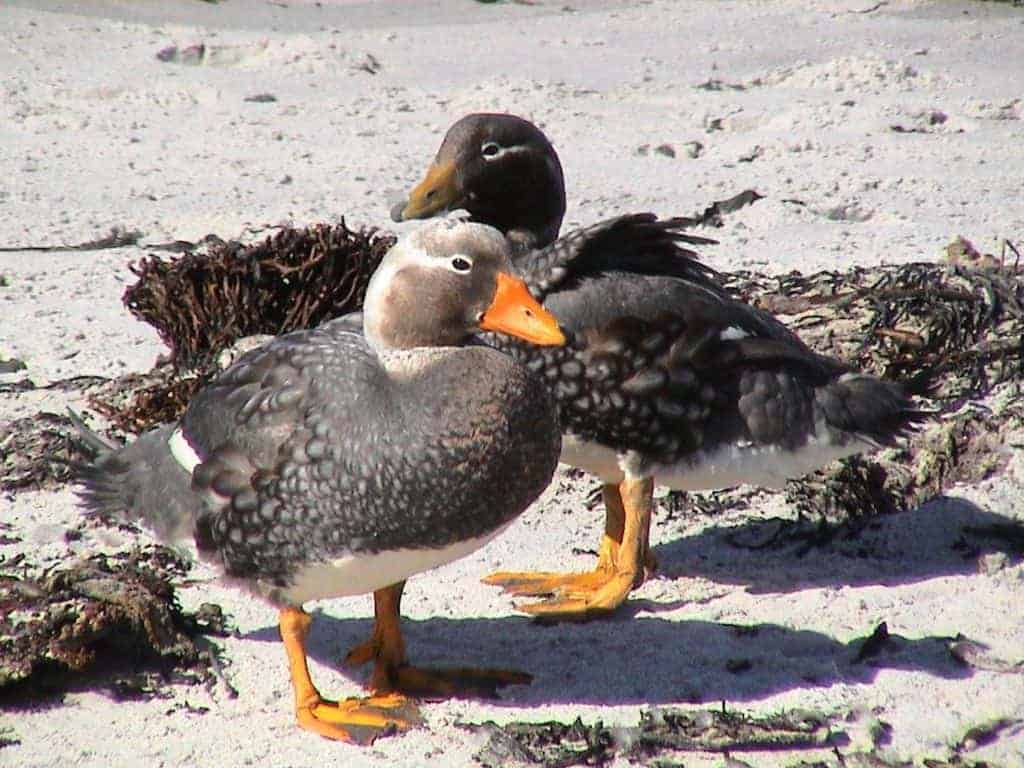Falkland Steamer Duck

Scientific Name
Tachyeres brachypterus
Alternative Names
Falkland Flightless Steamer Duck
Measurements
| Feature | Male | Female |
|---|---|---|
| Length | 61–74 cm | 61–74 cm |
| Weight | 3.3–4.8 kg | 2.9–4.2 kg |
| Wingspan | 84–94 cm | 84–94 cm |
Status
Endemic to the Falkland Islands and listed as Least Concern due to its stable population, estimated between 27,000 and 48,000 individuals.
Identification
A large, heavy duck with a short tail and strong build. Males have grey-brown plumage, a light grey head, and a bright orange bill. Females are darker, with brown heads and olive-green bills. Both have a white eye ring, white streak behind the eye, and yellow-orange feet. The wings are small with white patches and sharp spurs used for fighting. This species is flightless and moves by splashing and flapping across the water like a paddle steamer.
Voice
Males give loud, rasping whistles and ticking notes, especially during breeding season. Females produce deeper grunts and may join the males in duets.
Diet
Feeds mostly on marine mollusks and crustaceans. It dives and uses its strong feet and small wings to swim underwater. Occasionally upends to feed in shallow water.
Distribution
Found only on the Falkland Islands and nearby islets in the South Atlantic Ocean. Common along rocky coasts and in sheltered bays but can also visit ponds up to 400 m inland.
Habitat
Prefers rugged shorelines, kelp beds, and coastal areas with rocky outcrops. Sometimes nests among tall grass, seaweed piles, or even old penguin burrows near the shore.
Breeding
Breeding starts in September and continues through December, though some pairs may nest year-round. Females lay 4–12 eggs and incubate them for about 34 days. Nests are lined with down and hidden in vegetation or rocks. Males guard the territory aggressively using their wing spurs. Chicks hatch covered in brown-and-white down and stay with their parents for up to 12 weeks.
Wintering
Non-migratory. Remains around the Falkland coasts throughout the year, often forming family groups or large gatherings of up to 300 birds outside the breeding season.
Conservation
The species remains stable but faces some risks from invasive rats and potential oil spills that could harm its food sources. Predators include gulls and skuas that take chicks, while adult ducks have few natural enemies. Continued monitoring is recommended to protect their coastal breeding sites.
